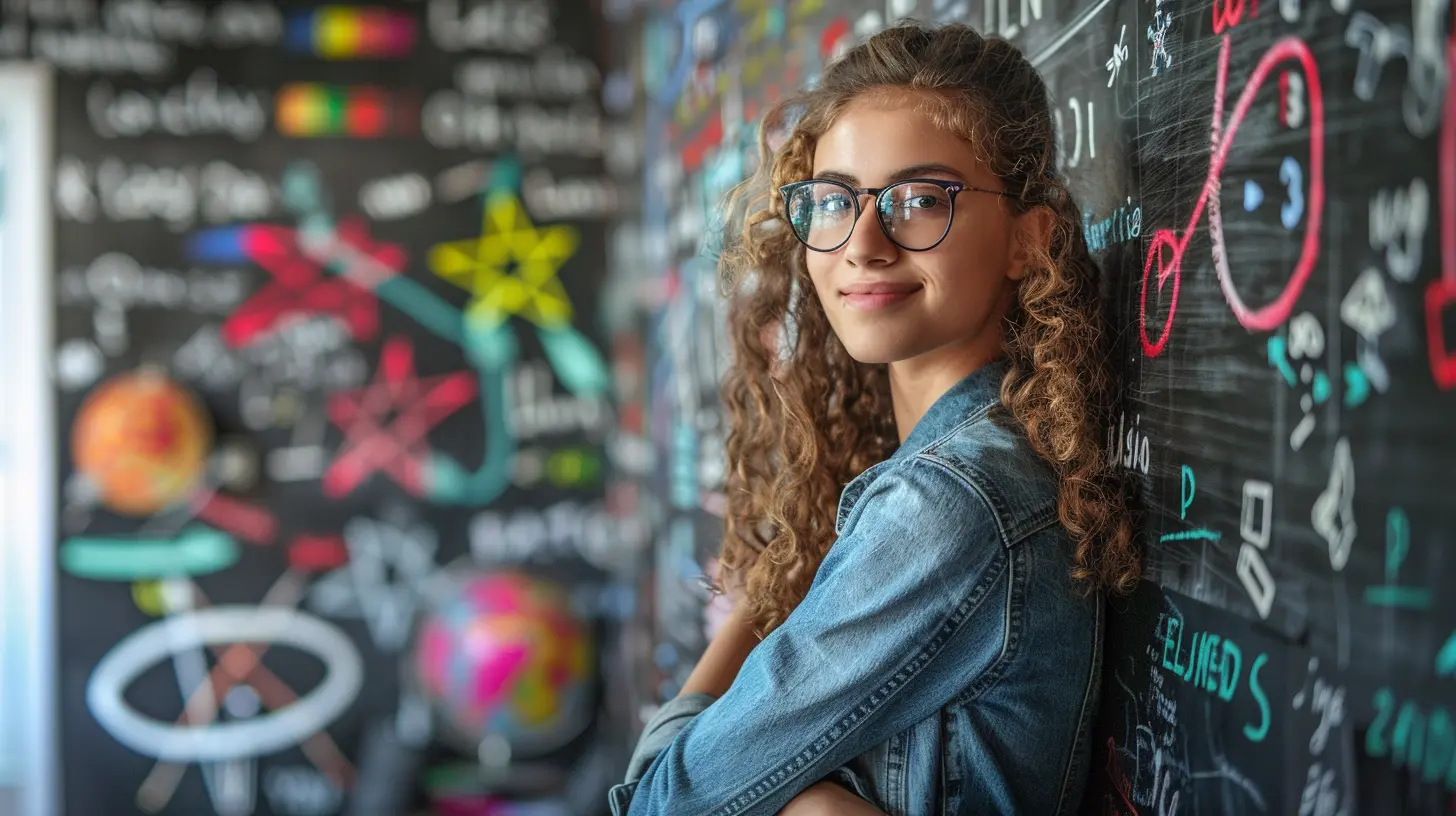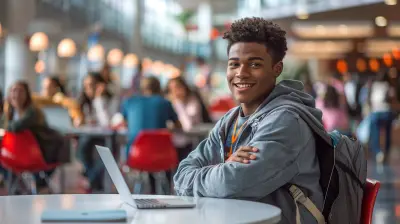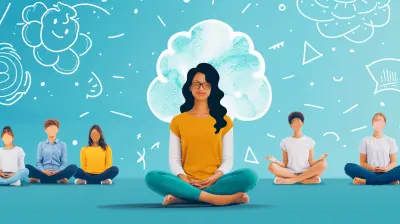The Benefits of Cross-Curricular Collaborative Learning Projects
26 August 2025
Let’s be honest—traditional education can sometimes feel a bit… disconnected. You’ve got math in one class, history in another, and science way over there doing its own thing. But in the real world? Everything’s intertwined. That’s where cross-curricular collaborative learning projects come in, and they might just be the game-changer we've all been waiting for.
In this blog post, we’re diving deep into what cross-curricular collaborative learning is, why it matters, and how it helps students thrive—not just in school, but in life.
What Is Cross-Curricular Collaborative Learning?
Before we jump into the benefits, let’s break this down.Cross-curricular collaborative learning involves combining multiple subject areas into a single project or learning experience, where students work together—usually in groups—to solve a problem, complete a task, or create something new.
So imagine this: a group project where students write a historical fiction story (English + History), build a website to showcase it (Tech + Art), and use math to budget their fictional characters’ expenses. That’s cross-curricular gold.
It doesn’t just mix subjects—it mixes minds. And that’s where the magic happens.
Why Should Educators Care?
Good question.Education isn’t just about shoving information into students’ brains. It’s about preparing them to thrive in a world that’s complex, interconnected, and constantly changing. Cross-curricular learning mirrors real-world situations where you rarely tackle a problem from a single angle.
Think about it—when’s the last time you solved a work problem using just one skill? Never, right? Teaching kids this way from the jump makes learning more meaningful and applicable.
The Top Benefits of Cross-Curricular Collaborative Learning Projects
Let’s peel back the layers and look at what makes this approach so powerful.1. Encourages Deeper Understanding
When students connect dots between different subjects, they create a broader, more meaningful understanding.For example, when a student learns about the Industrial Revolution in history and then applies algebra to chart population growth during that era, the knowledge sticks. It’s not just abstract info anymore—it’s part of a bigger picture.
This kind of learning invites students to ask, “Why does this matter?” and actually find the answer themselves.
2. Builds Real-World Skills
Teamwork. Critical thinking. Time management. Communication. Problem-solving. These aren’t just buzzwords—they’re essential skills for life.Cross-curricular collaborative projects push students to work together and take ownership of their learning. Instead of memorizing facts, they have to apply knowledge, debate ideas, and make decisions as a team.
It's like a workout for their brains—and their soft skills.
3. Sparks Creativity and Innovation
Let’s get real: creativity thrives at the intersection of ideas.When you bring together different subjects (and students with different strengths), you create a playground for innovation. A science student might think analytically, while a drama student brings storytelling flair. Put them in the same group? Boom—magic happens.
This approach gives students freedom to think outside the box, test theories, and dream up bold new solutions.
4. Increases Student Engagement
We all know how hard it can be to keep students interested—especially in topics they don’t initially care about.Cross-curricular projects give them a reason to care.
Instead of staring at another worksheet, they’re researching, building, filming, coding, experimenting. They see themselves as active creators of knowledge, rather than passive recipients. And when students are engaged, they’re more likely to retain what they learn.
5. Supports Personalized Learning
Another major perk? It reaches different kinds of learners.Some students shine in math, others in writing, others in hands-on work. Cross-curricular projects let each student contribute their strengths to the group and learn from others in the process.
It’s like each student brings a puzzle piece—and together, they build something bigger than themselves.
6. Promotes Cultural Awareness and Inclusion
By drawing on a variety of subject areas, cross-curricular learning allows for a more holistic view of the world. Projects can incorporate global issues, social justice themes, or community problems—giving all students a chance to see their background and ideas reflected in the curriculum.Working in diverse teams also helps students hear different perspectives, encouraging empathy and open-mindedness. And honestly, the world could use a bit more of that.
7. Prepares Students for Future Careers
Let’s face it—today’s jobs (and tomorrow’s) call for a blend of skills.Think of roles like UX designers, project managers, or environmental engineers. These careers don’t live neatly in one subject box. They require people who can think across disciplines, adapt on the fly, collaborate, and innovate.
Cross-curricular learning is one of the best ways to train for these realities. It mimics how modern teams operate and how complex problems are actually solved.
8. Teachers Benefit Too
This approach isn't just good for students—it’s a breath of fresh air for teachers, too.Cross-curricular projects open up opportunities for teachers to collaborate, share ideas, and break out of the subject silos that often exist in schools. Teaching becomes more dynamic and creative, with educators learning from one another as well.
And bonus? It builds a sense of community among staff that can boost morale and reduce burnout.
Real-Life Example: The “Sustainable City” Project
Let’s paint a picture of what this looks like in action.Imagine a class of middle schoolers tasked with designing a sustainable city. Here’s how different subjects come into play:
- Science: Research renewable energy, recycling systems, and water conservation.
- Math: Budget for city infrastructure, calculate energy usage.
- Geography: Choose an appropriate location, consider climate and resources.
- Art: Design blueprints or 3D models of the city.
- Language Arts: Write persuasive proposals and reflective essays.
- Civic Education/Social Studies: Debate laws and policies for the city.
In the end, students have not only learned a ton—they’ve also solved a real-world problem together.
Now that’s meaningful learning.
Tips for Implementing Cross-Curricular Projects in Your Classroom
Feeling inspired? Want to give this a shot? Here are a few tips to get you started:1. Start Small
You don’t need to overhaul your entire curriculum right away. Try a mini-project that ties two subjects together—like a math-art symmetry project or a science-history environmental timeline.2. Collaborate with Colleagues
Team up with teachers from other subjects. Work together to align your goals and plan a unified project. Trust us—two heads (or more) are definitely better than one.3. Make It Relevant
Choose topics that resonate with your students. The more relevant the project is to their lives, the more invested they’ll be.4. Let Students Lead
Give students some control over how they complete the project. Their creativity might surprise you—and student-led learning is often the most powerful kind.5. Reflect and Assess
Build in time for students to reflect on what they’ve learned across subjects. Use rubrics that evaluate collaboration, creativity, and understanding—not just the final product.Common Challenges—and How to Overcome Them
No strategy is perfect, and cross-curricular projects come with a few hurdles. But with a little foresight, they’re totally manageable.1. Time Constraints
Teachers often say, “I’d love to, but there’s just no time!” The key is integration. You’re not adding more work—you’re teaching the same standards in a more connected way.2. Uneven Participation
To avoid uneven contributions in group work, assign roles or rotate responsibilities. Use peer and self-assessments to keep everyone accountable.3. Assessment Concerns
Worried about grading group projects? Develop clear rubrics that assess both individual effort and group outcomes. Consider including reflection journals or presentations to better gauge understanding.Final Thoughts
Cross-curricular collaborative learning isn’t just a trendy teaching method—it’s a powerful approach that reflects how the real world works. By breaking down the walls between subjects and encouraging teamwork, we create an environment that fosters curiosity, creativity, and critical thinking.It’s time to stop teaching subjects in isolation and start helping students see the bigger picture.
Let’s give them the tools to not just pass tests—but to innovate, lead, and thrive in the world they’re inheriting.
all images in this post were generated using AI tools
Category:
Collaborative LearningAuthor:

Bethany Hudson
Discussion
rate this article
1 comments
Caelum McNaughton
Collaboration sparks creativity; mixing subjects turns learning into an engaging masterpiece!
September 16, 2025 at 4:48 AM

Bethany Hudson
Thank you! I completely agree—cross-curricular collaboration truly enhances creativity and makes learning more dynamic and enjoyable!


